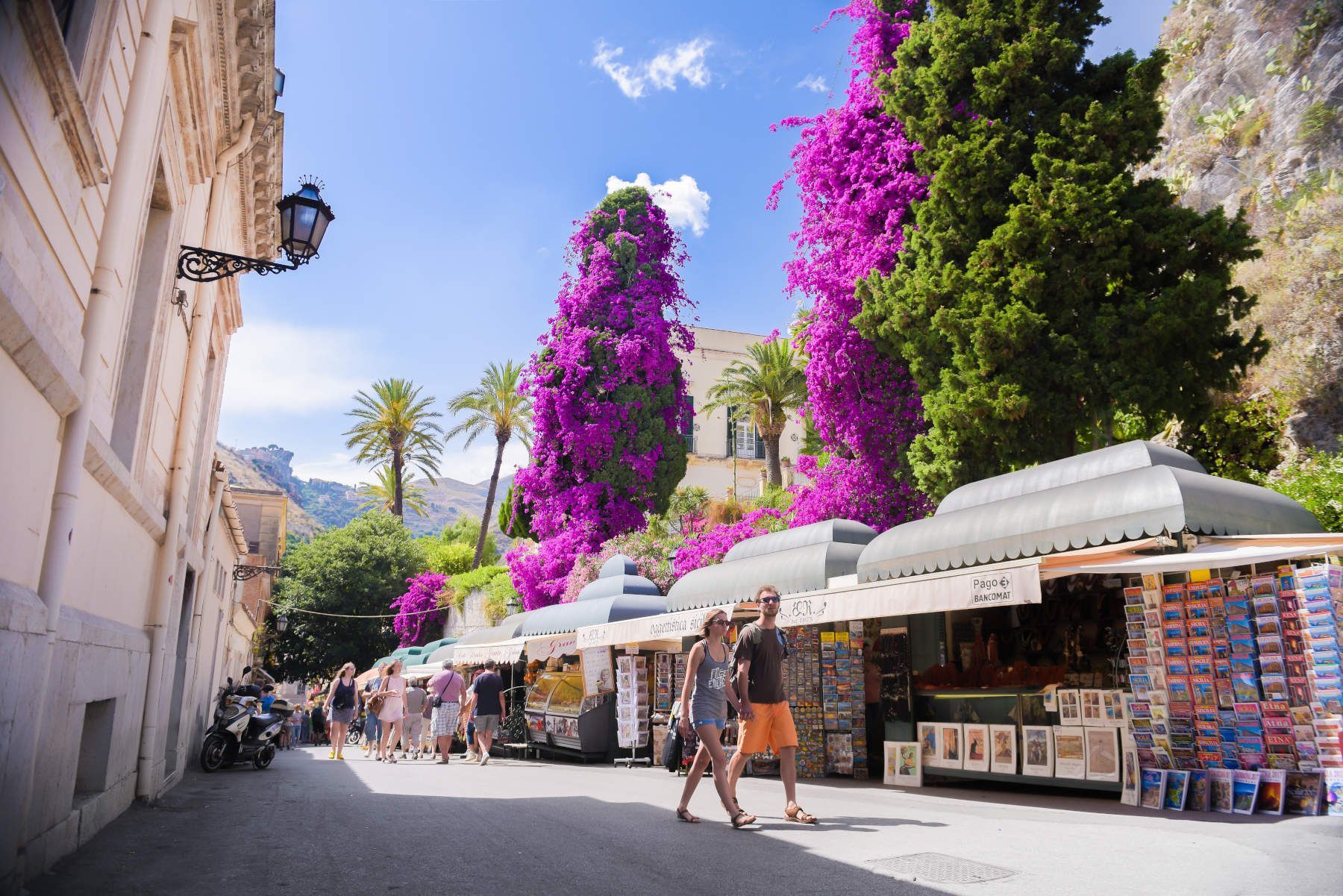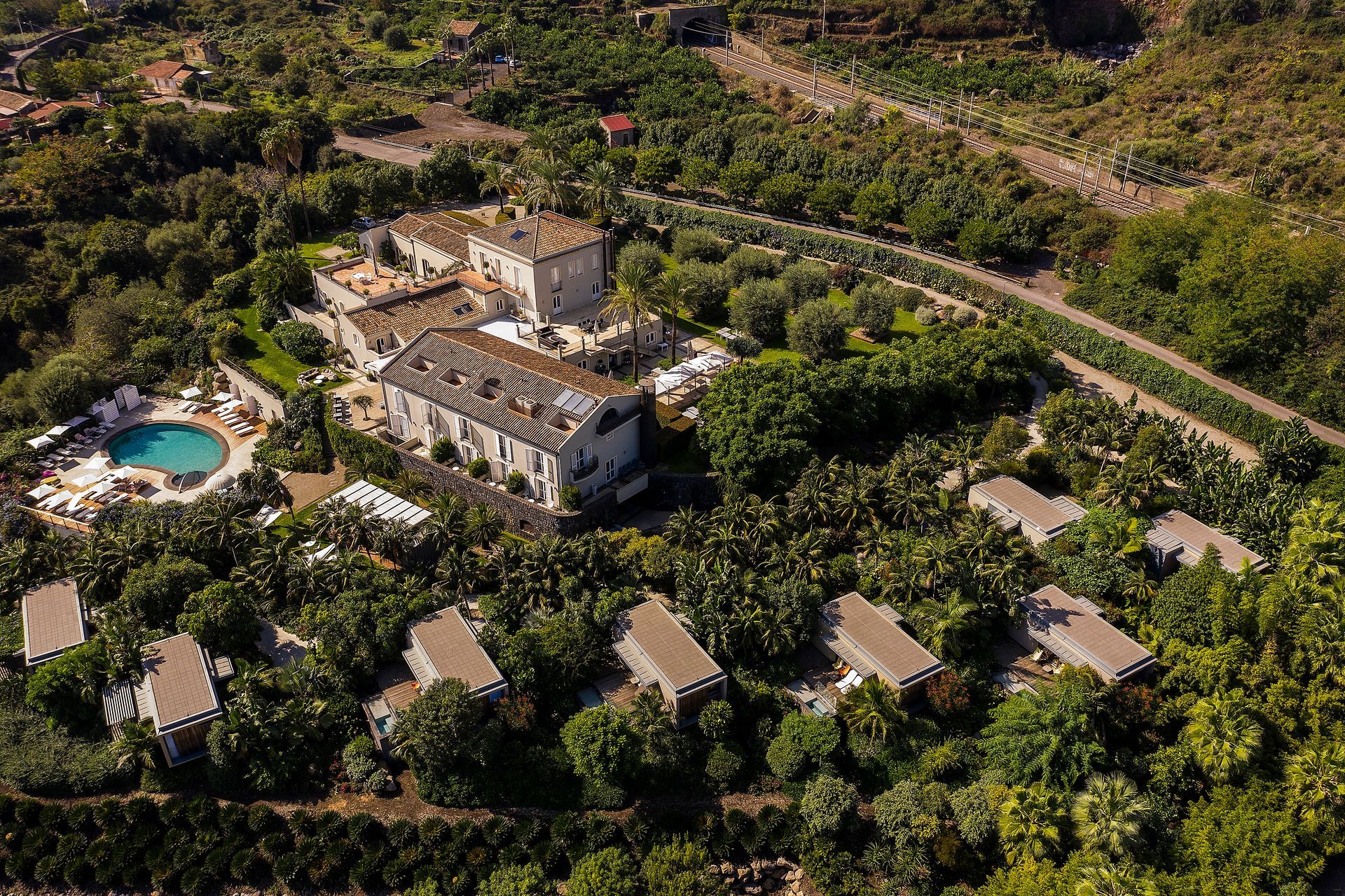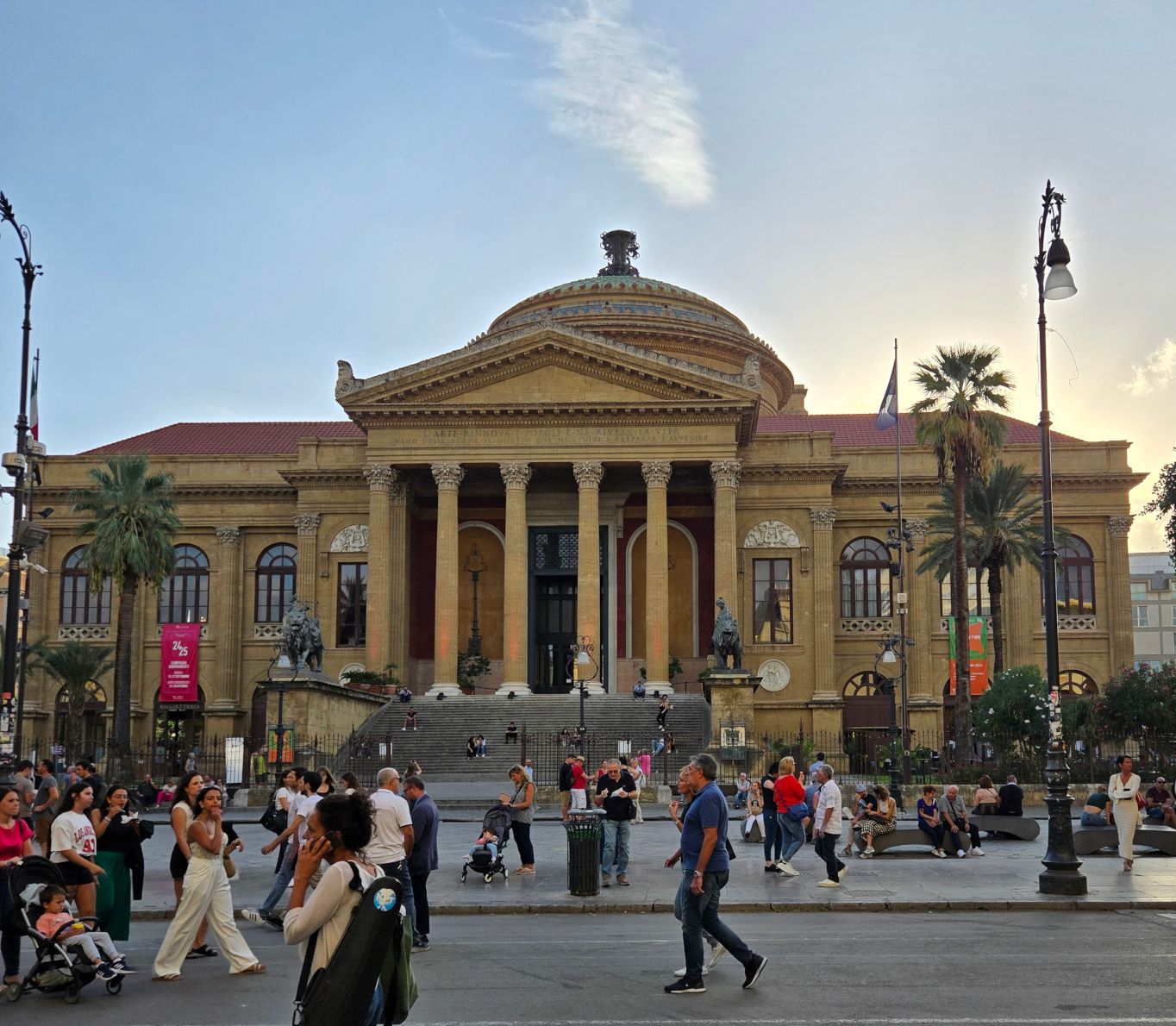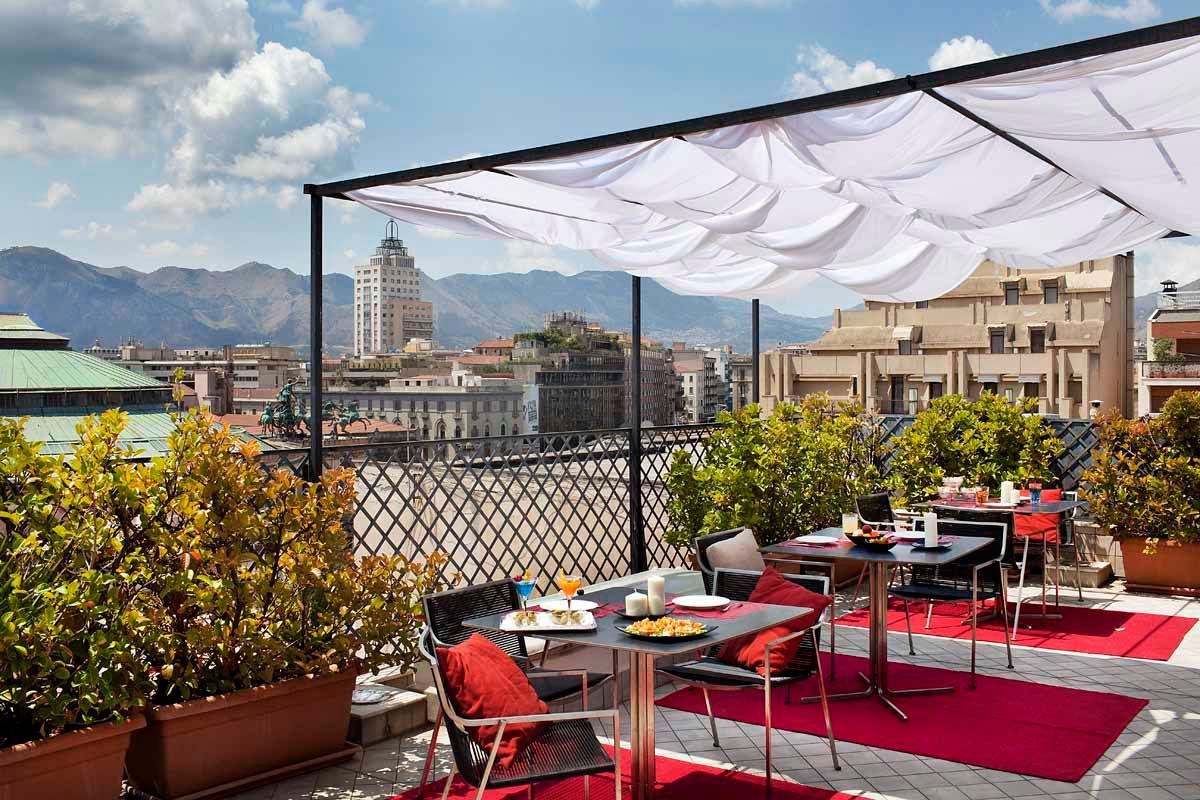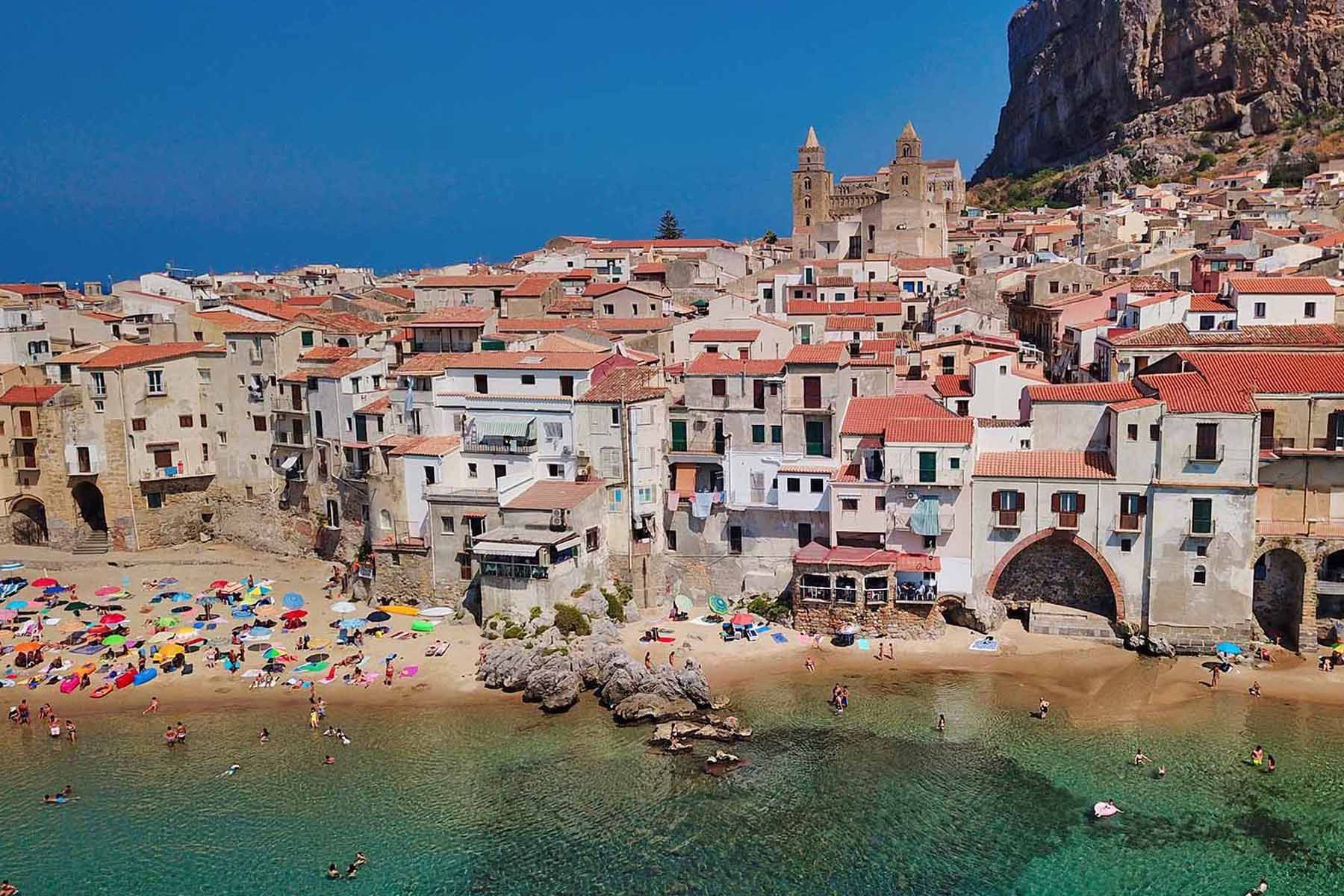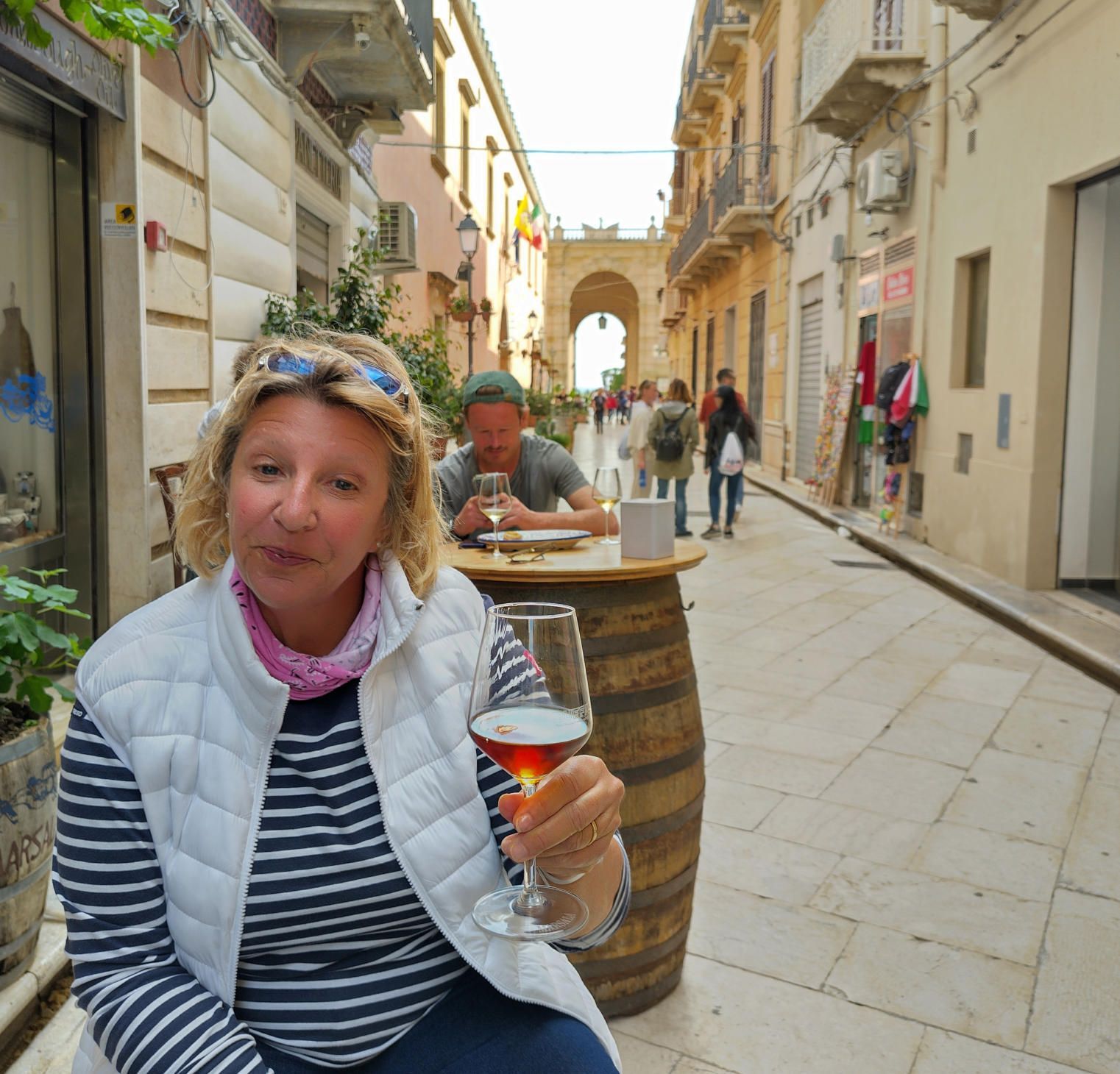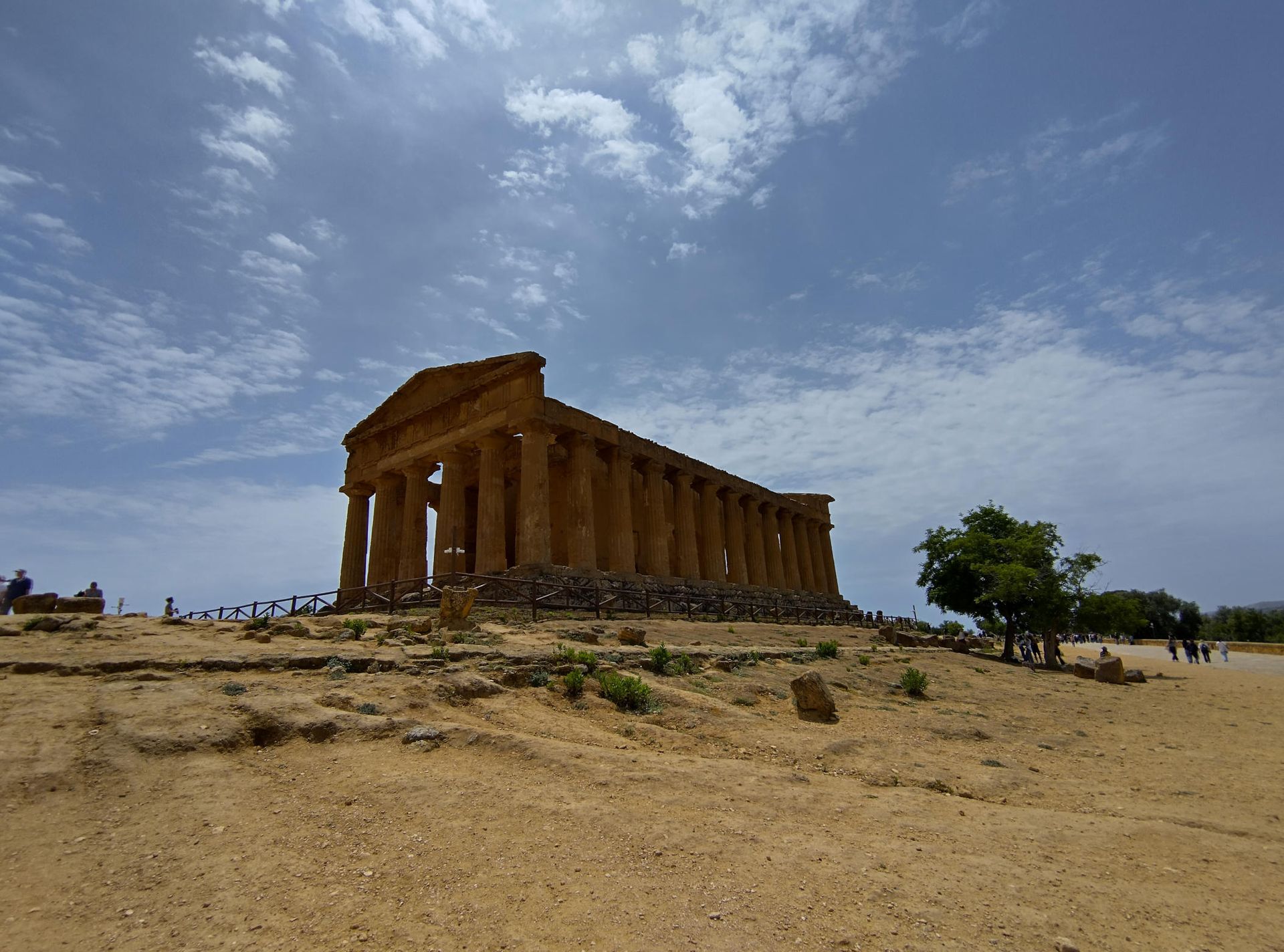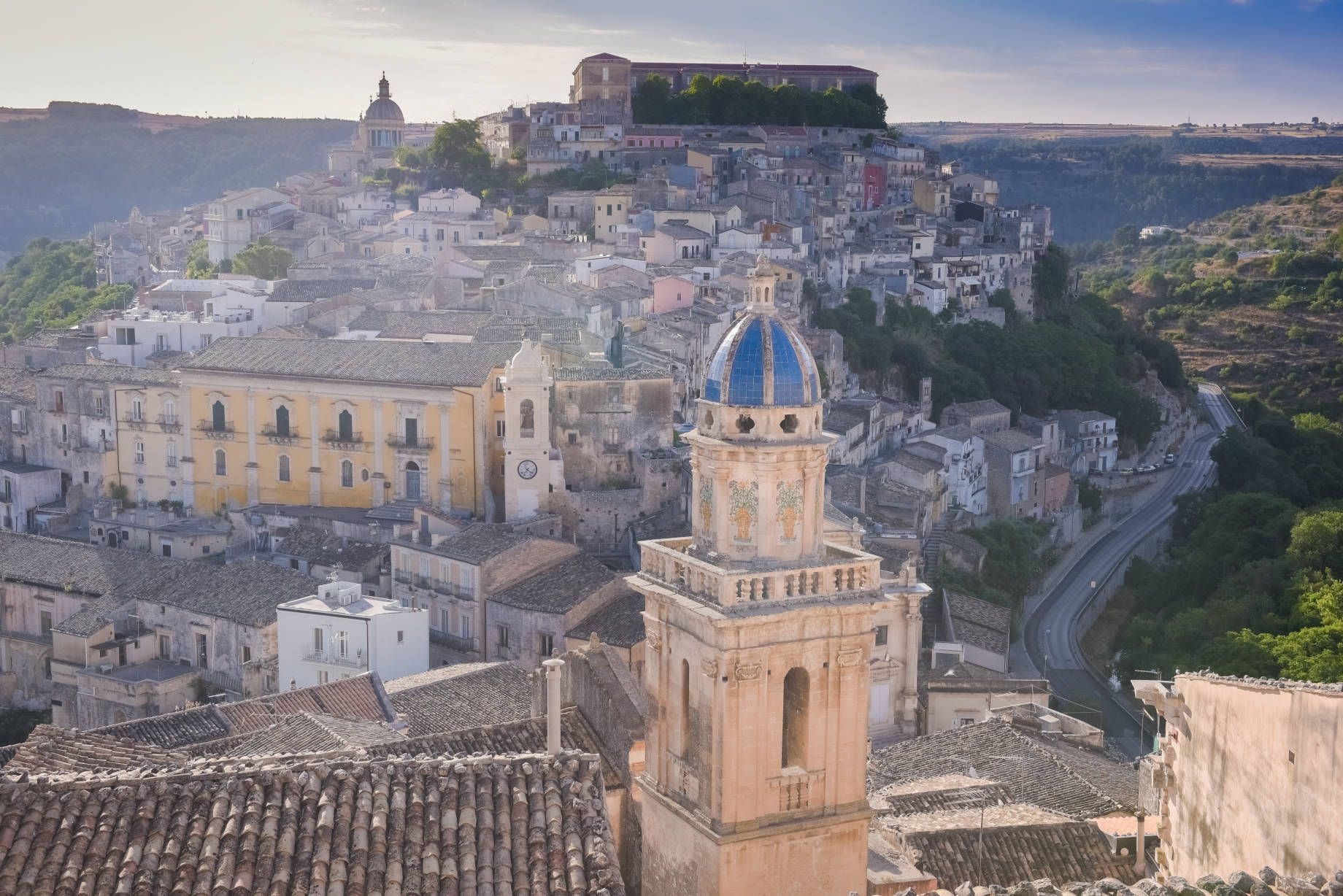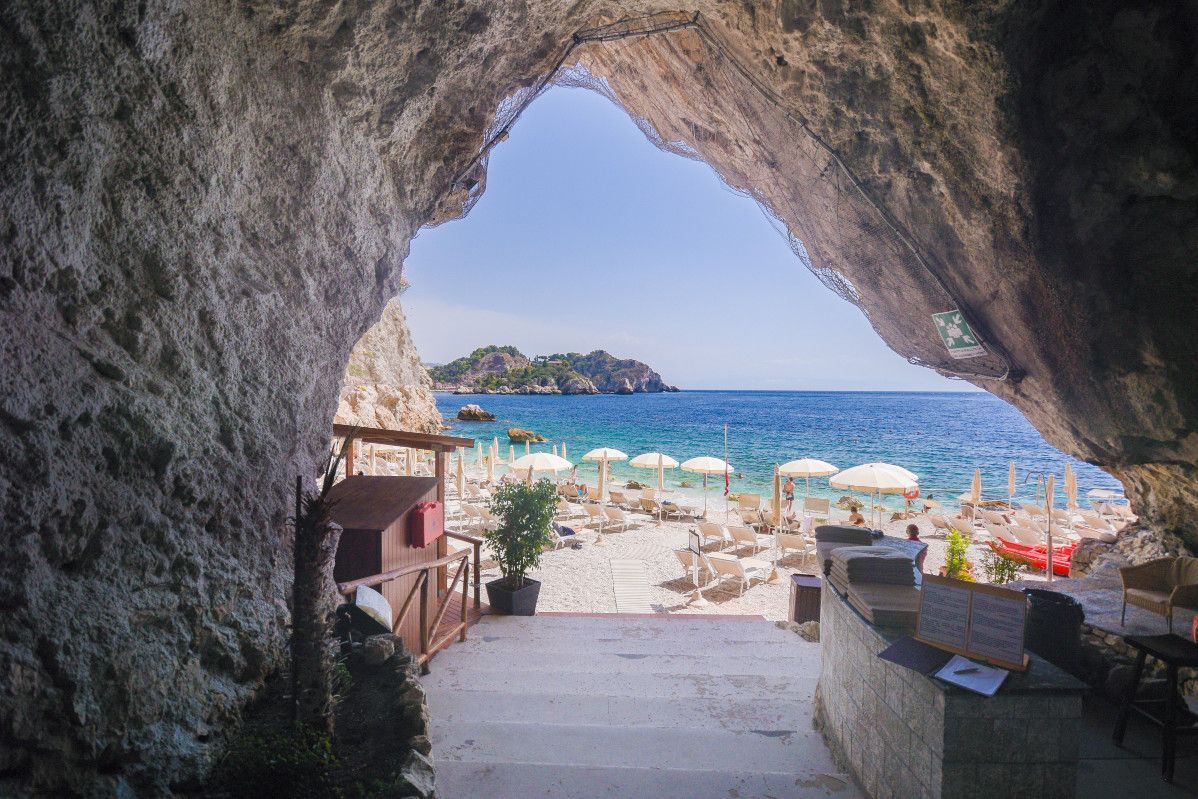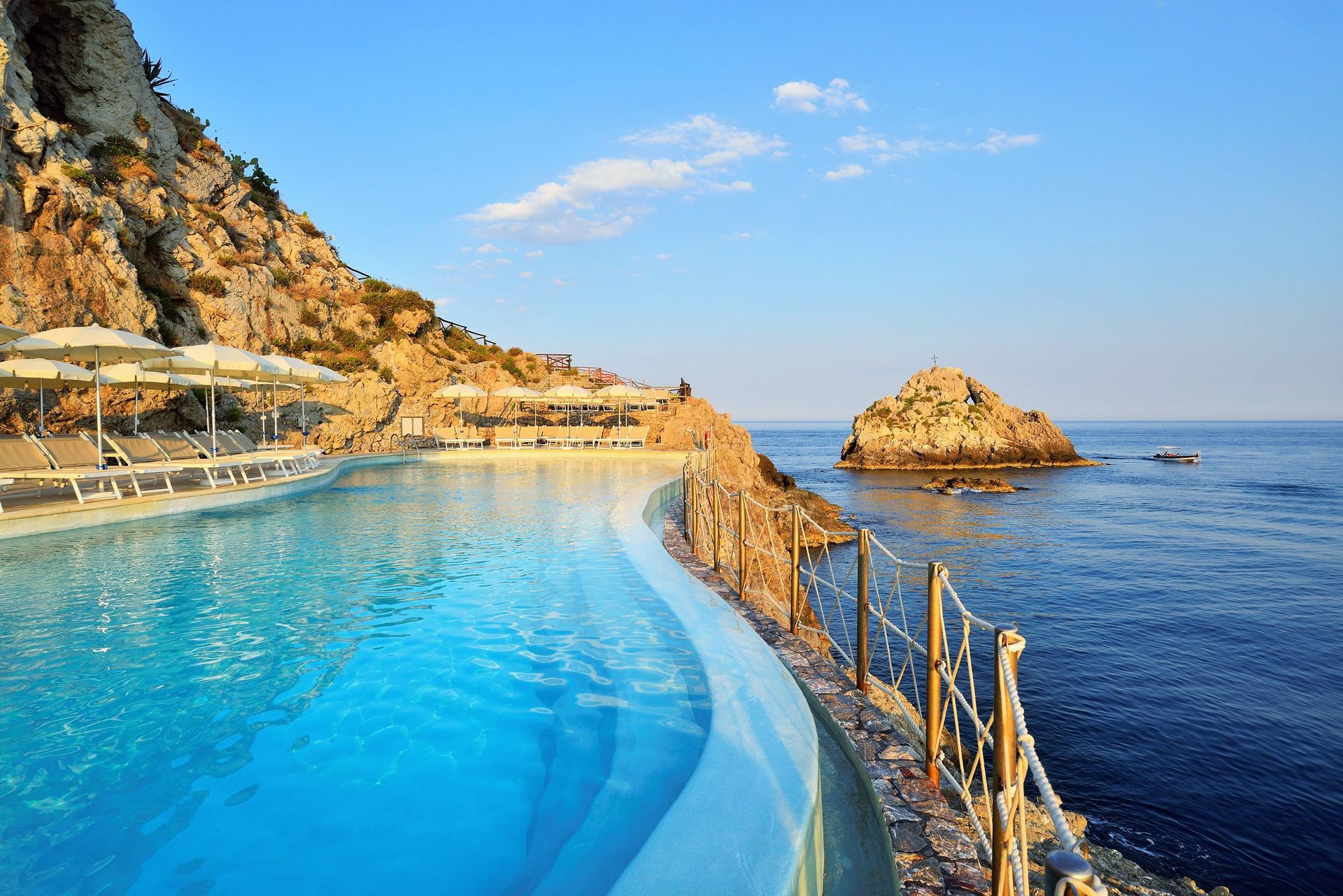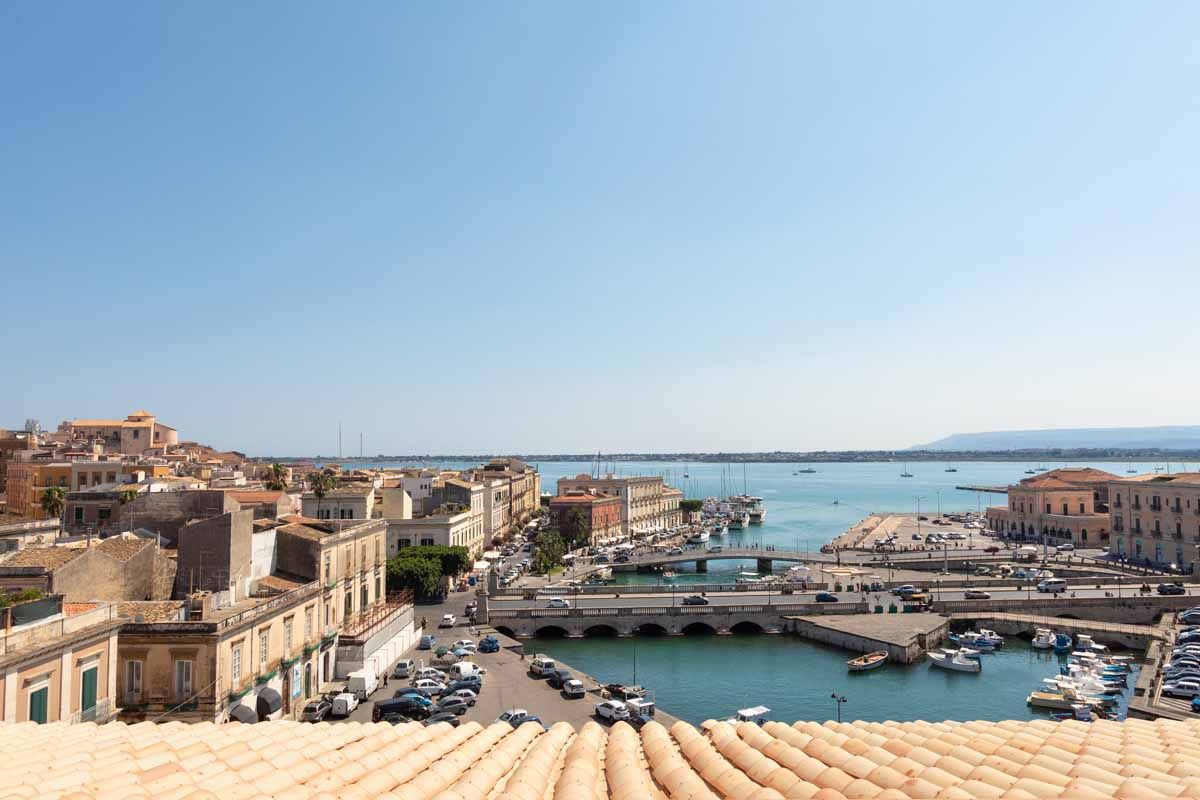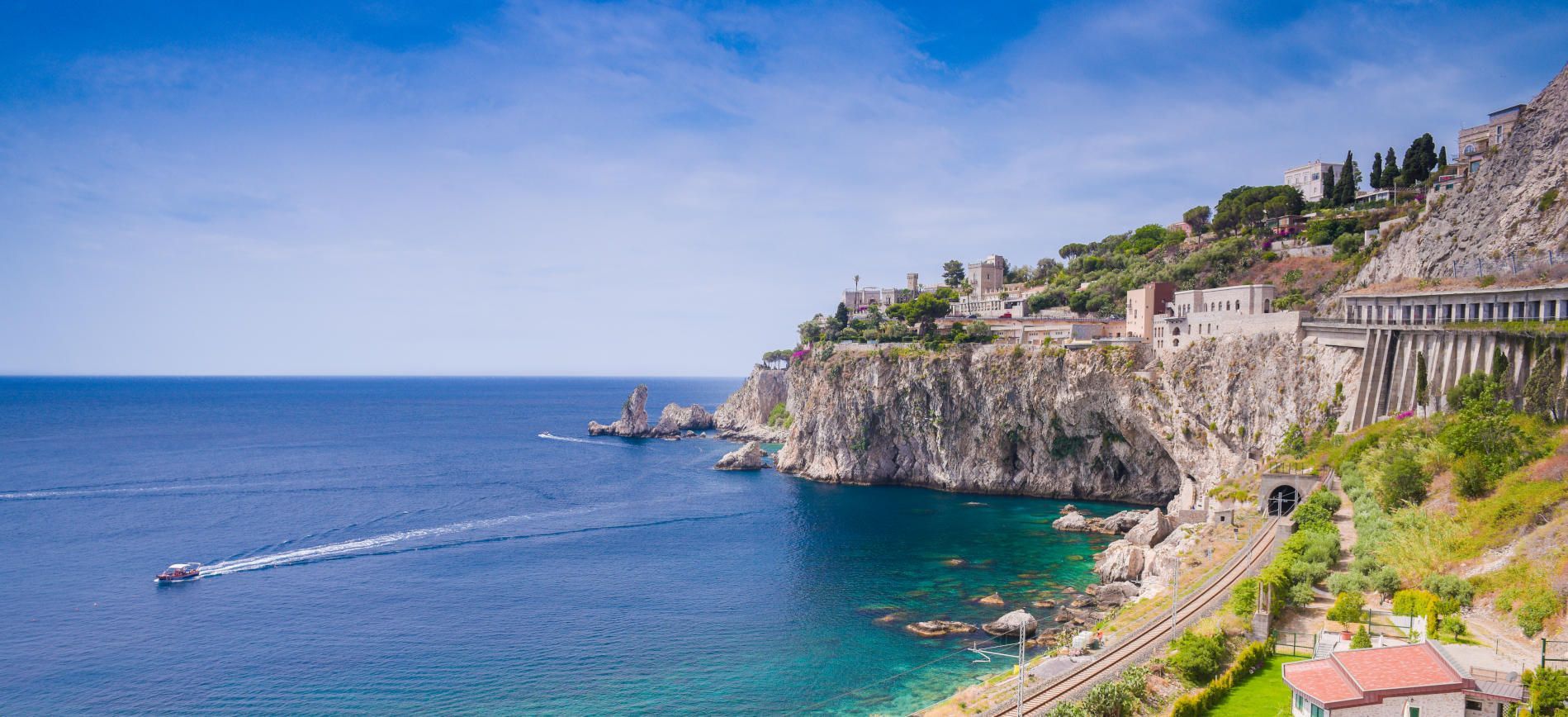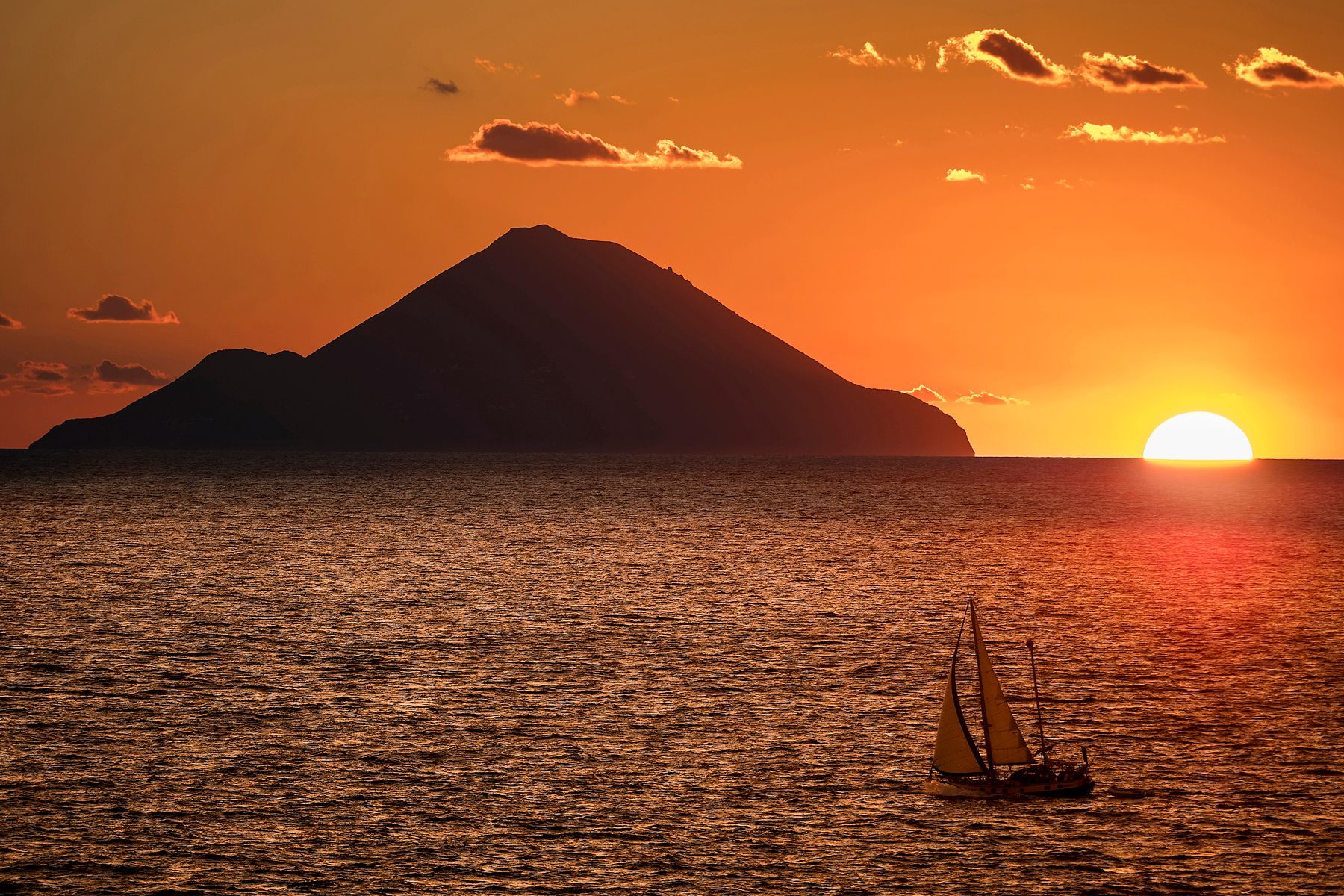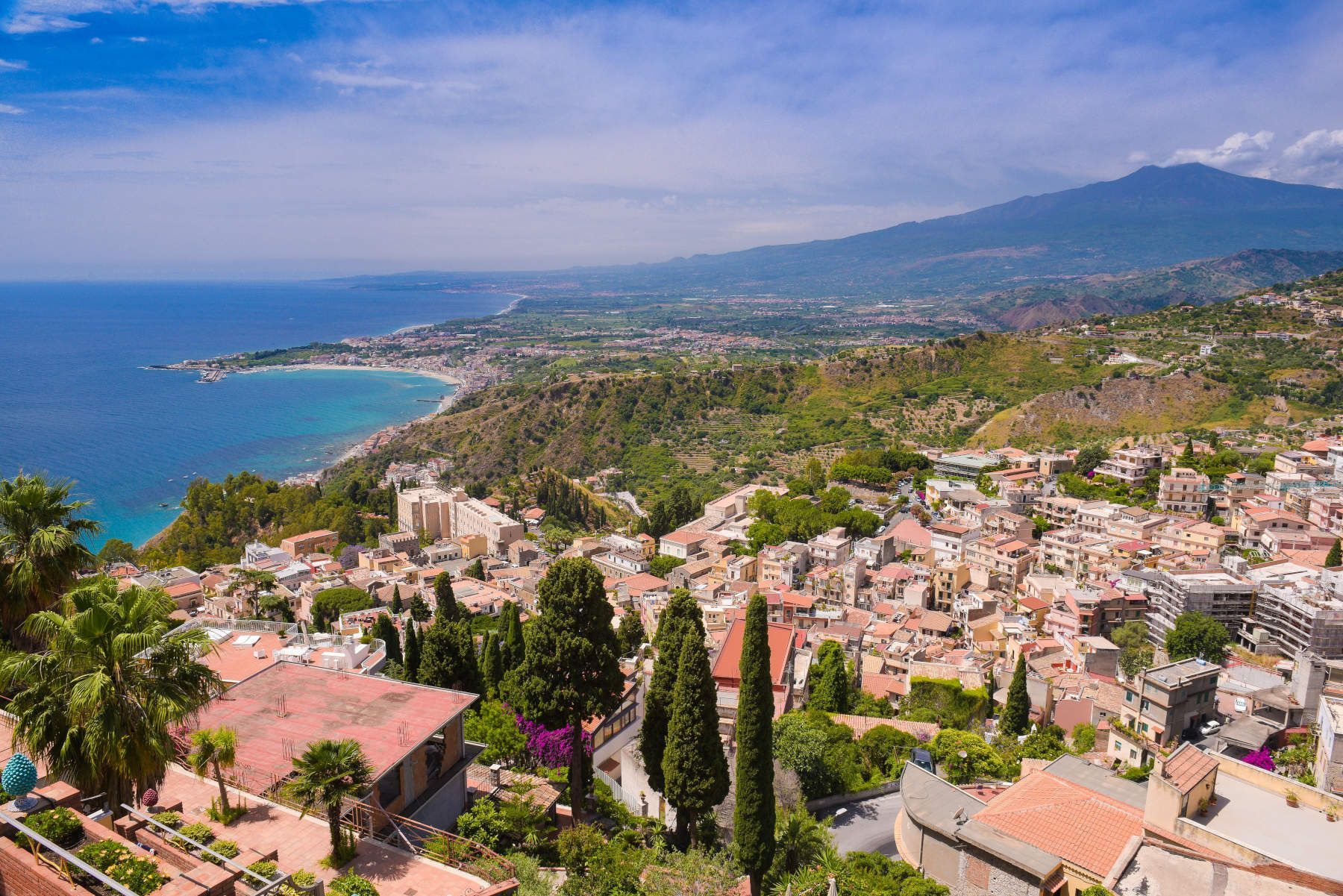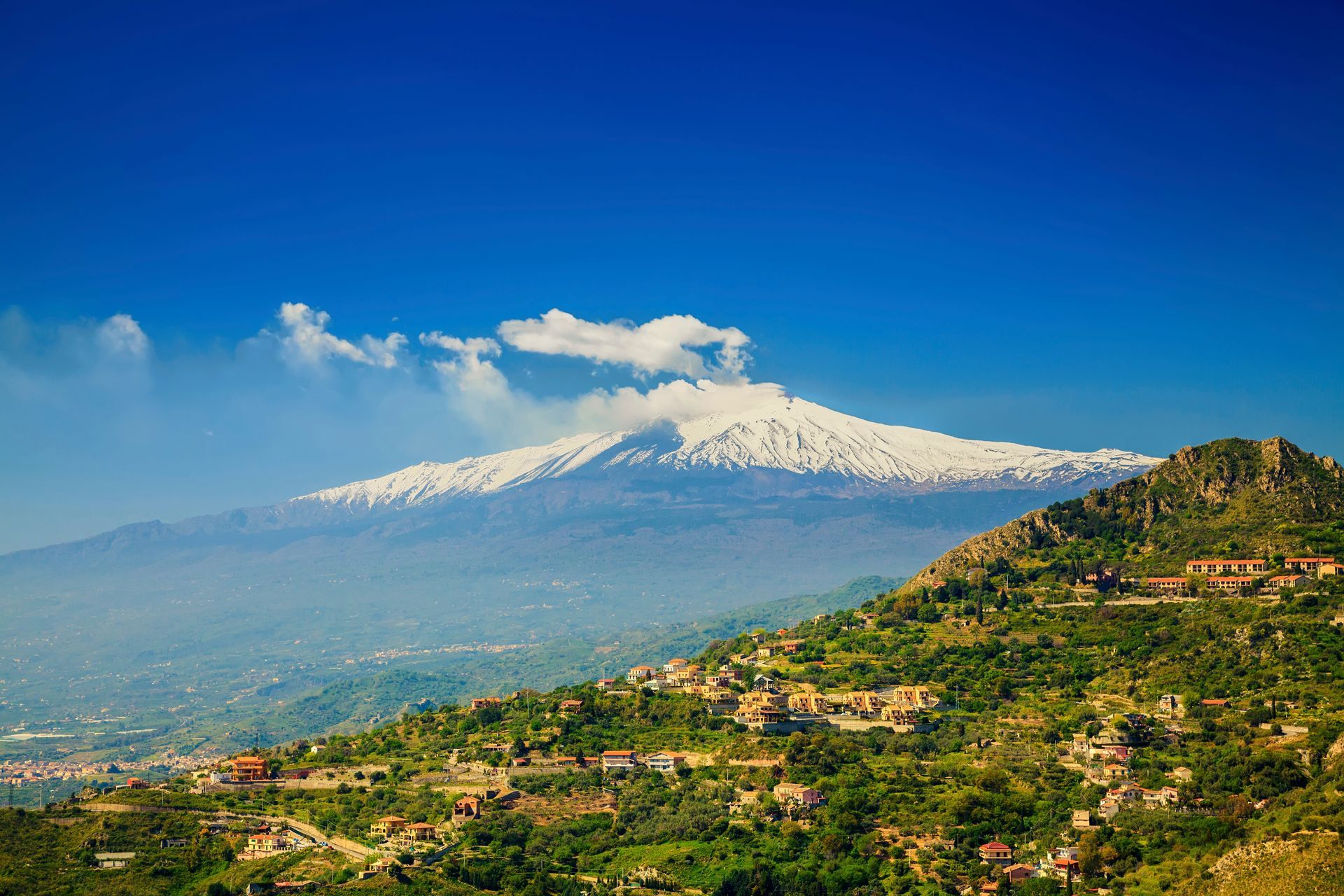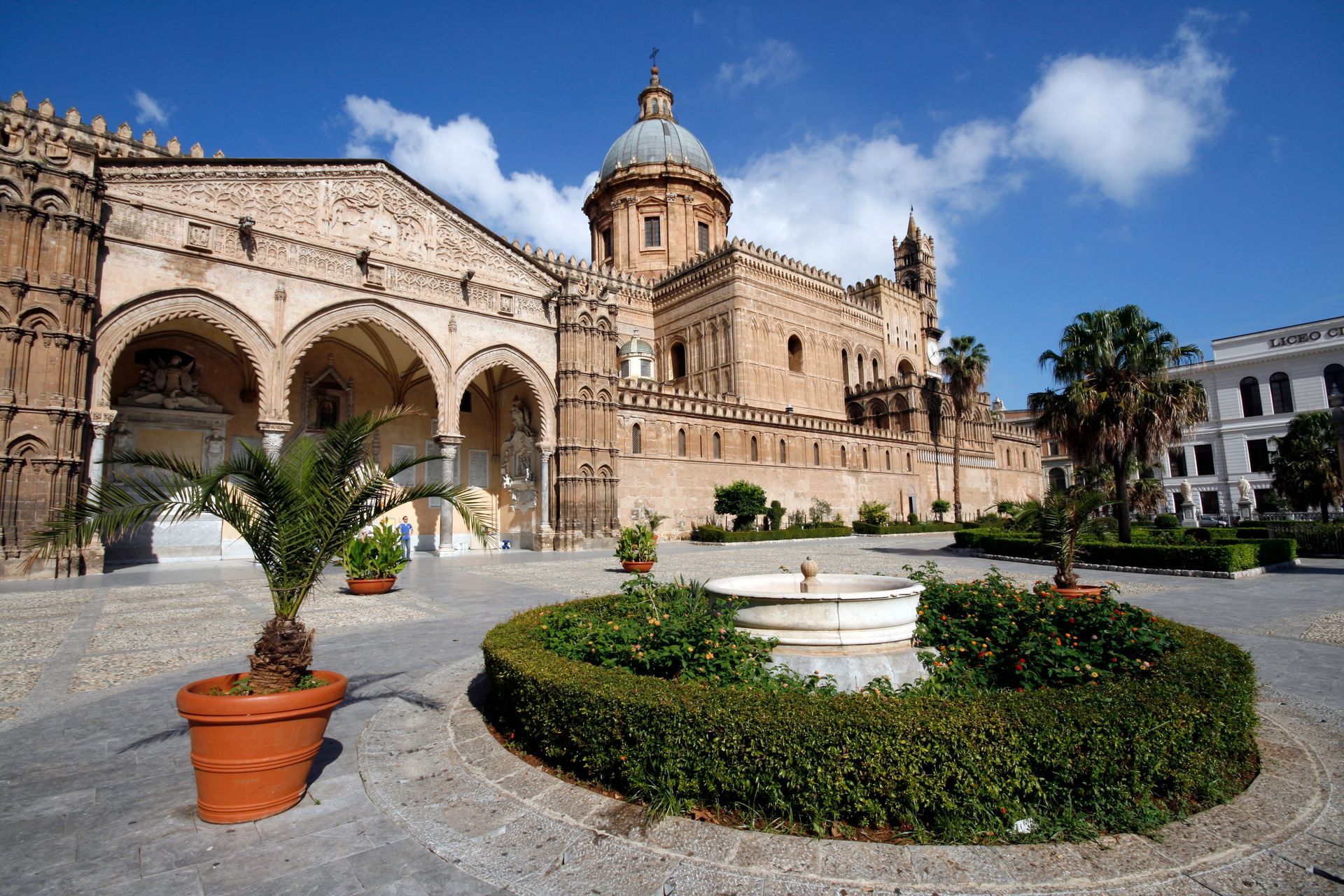How to Make the Most of 14 Days in Sicily
A Guide to Sicily by Rob Ashton-Kane, Just Sicily Product Director
How to Make the Most of 14 Days in Sicily
Sicily is not all about Montalbano and
White Lotus - it is a treasure trove of unique sites that testify to its rich, and often troubled past together with natural beauty sculpted by millennia of geological upheaval.
Two Weeks in Sicily: Where are the Must-See Attractions?
During a recent 14 day trip to Sicily, I was able to discover what the island has to offer for those who would prefer to immerse themselves in the island’s historic, architectural and natural wonders as opposed to simply relaxing on its beaches soaking up the sun. Indeed, amongst the not-to-be-missed features of the island, is the dominating figure of Mount Etna which overlooks a large portion of the island – and whose frequent eruptions occasionally dust the surrounding villages and towns in its black, volcanic dust. The mountain, at a height of 3,357 metres (over 11,000ft), is relatively easily accessible and, in addition to the wonderful spectacle of its snow-flanked craters, also offers spectacular views for miles around. Whilst Etna itself isn’t seen when flying into Palermo, it’s smaller sisters on the Aeolian islands of Volcano and Stromboli may be visible.
What is the best time of year to spend two weeks in Sicily?
To enable visitors to fully enjoy Sicily's riches, my 10-day itinerary includes the island's main attractions that can be discovered without the need to do too much planning. I would recommend a tour is undertaken in the months of May, June, September or October in order to avoid the highest temperatures and avoid the summer tourists.
What are the main airports in Sicily? Which airport should I fly into to visit Sicily?
Flights from the UK are available to Palermo and it is possible return from Catania, served by a number of UK airports including Gatwick, Stansted, Manchester and Dublin.
How Can I Get Around Sicily?
Car hire is ideal for exploring at your own pace, especially the rural areas.
What is the Best Itinerary for 14 Days in Sicily?
DAYS 1 – 3 : PALERMO & CEFALU
Is Palermo worth visiting? How long should we stay in Palermo?
Similarly to many large cities in Europe, the amount and geographical spread of attractions can make getting the most out of any visit to Palermo seem a daunting prospect. However, by targeting the major points of interest, it is possible to appreciate the amazing architecture and fascinating history of the city.
In addition to the spectacular Cathedral in Palermo, there are officially 84 churches in the city, many of which date from the Arab-Norman era and, this architecturally give more than a nod to buildings of the Islamic culture. There are also many fine examples of Gothic and Baroque styles which were built more recently but which also boast impressive detail and many have opulent interiors. One of the best examples is the Cappella Palatina, situated on the impressive Palazzo del Normanni and which has arguably the finest interior of all the churches in the city
Piazza Vigliena, also known as the ‘Quattro Canti’ is a Baroque square and the center of the historic quarters of the city. It is located at the junction of two of the main streets in the city, Corso Vittorio Emanuele (euphemistically known as ‘Cassaro’) and Via Maqueda, and this intersection is where the borders of the four ancient cantons of Palermo converge. It is marked by 4 architecturally identical buildings with curved frontages facing inward towards each other, and with each having its own integrated fountain, each representing one of the four seasons.
Not far from the Quattro Canti is the Piazza Pretoria with its magnificent fountain and a short walk north along Via Macheda leads to Piazza Giuseppe Verdi and the magnificent Teatro Massimo.
Palermo is also renowned for its street markets, in particular, del Capo, la Vucciria and, possibly the most famous, Ballarò where all realms of products are available including clothing, jewellery, fruit & vegetables, meat and fish. Associated with the markets – and indeed found elsewhere in the city – are the street food stalls serving Sicilian specialities such as arancini, stigghiola, crocè and, for something sweet, cannoli.
Palermo Hotel Recommendation: Hotel Plaza Opéra>
Is Cefalù a good day trip from Palermo?
About 60 minutes’ drive to the east of Palermo is the alluring seaside town of Cefalù, dominated by a huge cliff – a further of the turbulent geomorphic history of the island – and having ancient, cobbled streets to explore whilst being situated to a wonderful sandy beach.
The town’s history dates back to the medieval era when Arabs established the own in mid 850s AD after which, in 1063 as part of the Norman invasion, the town was taken by Count Roger and his men and was rebuilt, many elements of which still exist today.
What are the best things to do in Cefalù?
The ideal way to explore the town is to wander through its narrow streets with many interesting shops, cafés & restaurants along the main thoroughfare, Corso Ruggeo, which leads to the impressive cathedral on Piazza Duomo. Running parallel is Via Vittorio Emanuele where there is a wide choice of restaurants overlooking the sea and the ancient wash-house, the Lavatoio, where the townsfolk used to wash their clothes using the water from a spring that issued close to the sea. Continuing further along, leaving the town centre’s eastern boundary, is the small fishing port where daily catches are landed, and fresh fish can be bought direct from the fishermen.
An excellent way to see the town from above is to take the ½ hour walk to the top of ‘La Rocca’, the 270m high cliff that overlooks the town, which affords amazing views all around and out to sea – including sight of the volcanos of the nearby aeolian islands. Alternatively, a more gentle
stroll along the long, sandy beach stopping off at one of the many beach-side bars in the early evening can offer wonderful views of the sunset.
Cefalù Hotel Recommendation: Alberi del Paradiso>
DAYS 4 – 5 : MARSALA
What is Marsala famous for?
Situated around 1½ hour’s drive from Palermo, Marsala is Sicily’s westernmost town and perhaps best known for its sweet, dessert wines, the pure, pink sea saltpans and also as Giuseppe Garibaldi’s landing point on the island during the Expedition of the Thousand – part of the reunification of Italy.
Top Things to do in Marsala:
The town itself has much to offer, in particular its impressive architecture, some examples of which include the Baroque Monastery of San Pietro which also houses the civic museum with artefacts relating to Garibaldi’s presence on the island.
Also worth seeing are the Piazza della Repubblica, overlooked by the cathedral and having restaurants and shops around its perimeter, and the Palazzo VII Aprile with its arcaded frontage. Also, the Convento del Carmine – now a museum of contemporary painting – and the Baglio Anselmi archeological museum are popular with visitors.
When leaving the city, it’s almost obligatory to take a bottle of the local marsala wine – made famous by John Woodhouse who, when sending sample barrels back to the UK, added ‘aqua vita’ spirit (water of life) to prevent it from spoiling and which, in turn, gave it its distinctive flavour and slightly enhanced alcohol content!
Hotel Recommendation: Almar Giardino di Costanza Resort
DAYS 6-7 : AGRIGENTO
What is Agrigento Sicily known for?
Approximately 2 hours’ drive south-west of Marsala is the town of Agrigento and just outside is the historic UNESCO site of Valle dei Templi (Valley of the Temples), an impressively well-preserved array of Greek temples arranged on a hilltop site extending to around 1,300 hectares. Its 7 Doric temples are in varying states of preservation, although all are easily identifiable, and, along with the other remains and artefacts, the impressive information provided on a visit enables visitors to fully appreciate their history and culture.
How much time do you need in at The Valley of the Temples?
Whilst it is possible to do a self-guided walking tour of around 1mile in around 90 minutes, to fully appreciate the scale and impressive achievements in the building of these temples, it is recommended to take at least half a day. Indeed, in addition to the temples and other ruins, the Kolymbetra gardens are also worth a visit. This ancient reservoir provided the drinking water for the ancient town of Akragas and has been preserved as a five-hectare garden with planted areas growing fruit and vegetables, ancient aqueducts, with a wide range of Mediterranean plants including almond and citrus trees. For more information click here >
Is it worth visiting Agrigento?
Agrigento town itself has its historic ancient quarter, Girgenti, which is a maze of winding, narrow streets leading to the Norman cathedral. In addition, the town has an impressive open square, Piazza Purgatorio on which is located the baroque church of San Lorenzo, with the Lucchesiana Library, church of Santa Marie dei Greci also being nearby.
Is the area around Agrigento worth visiting?
Around 15km to the west of Agrigento, the fascinating Scala dei Turchi (the Turkish Steps), are naturally formed ridges sculpted from the white marl cliffs by thousands of years of erosion by the sea and wind, and which resemble a staircase and which legend has it were used by Turkish pirates seeking to pillage the villages in and around the nearby Realmonte area. Another local legend includes the two Gucciarda rock in the sea just off the Scala dei Turchi, known affectionately as Zita eu Zitu, and which are said to be the petrified incarnations of the young lovers Rosalia and Giuseppe who took their own lives as their parents refused to let them marry.
Hotel Recommendation: Masseria Agnello>
Days 8 – 10 THE BAROQUE TOWNS
Which Sicilian towns are famous for Baroque architecture?
One of the most enchanting areas of the island is to be found in the south-eastern sector of the island that encompasses the baroque towns of Ragusa, Modica and Scicli , Ispica and Noto which, technically, as each has at least one cathedral, are actually cities.
Ragusa was divided into two parts – quite literally – by a devastating earthquake in 1693 which, as well as razing much of the southern part of the island to the ground, also created a huge ravine separating what was left of what is now Ragusa Alta (upper) and Ragusa Ibla (lower). The winding narrow streets of the two rebuilt elements of the city are now connected by ‘, impressive bridges traversing the ravine – ‘Valle dei Ponti’ - and each has its own fascinating features including the cathedral of San Giorgio in Ragusa Ibla.
Modica: Whilst possibly being better known for its wonderful chocolate, nearby Modica is also a treasure-trove of examples of Baroque architecture created when the city was also rebuilt after the earthquake. Known as ‘The City of a Hundred Churches’, and having UNESCO World Heritage status, Modica set in the hills and built on four rock promontories. The focal point of the city is the cathedral Santo Gorgio which is over 60 metres tall and is accessed by 250 steps and the shadow of the cathedral’s main steeple cast on the palazzo below forms a huge sundial. In the most ancient part of the city, the Vignazza-Fontana quarter, its bronze-age history is evidenced by the thirty tombs of the Necropolis of Quartiriccio. Overlooking the city is the impressive Castello del Conti close to which is the clock tower which is also a symbol of the city.
Scicli: South of Modica, close to the sea, is the city of Scicli. (the focal point for much of the ‘Montalbano’ series) Set at the confluence of three valleys, the city was, as with its neighbours, rebuilt from the rubble after the 1693 earthquake and the wealth of those who contributed to that renaissance is edified in the many ‘palazzo’s and the opulence of its churches and cathedrals. Indeed, amongst those, the city boasts the claim of having not only the most beautiful Baroque Palazzo in Sicily – the Palazzo Beneventano – but also the most beautiful street on the island – Via Franceso Mormino Penna – along which many of the other palazzos are situated. Whilst one of the smallest of the ‘Baroque towns’ Scicli is a focus for the exponents of European contemporary art, giving its name to ‘the Scicli Group’ – a collect of the better-known Italian exponents – some of whose works are on display in the city’s Palazzo Spadaro.
Ispica: Approximately 30km east of Ragusa is the town of Ispica which again, was rebuilt after the 1639 earthquake but in a much more regimented grid fashion than some of its neighbours. Nevertheless, its appearance is rich with Baroque architecture but with an ‘Art Nouveau’ twist - particularly the Palazzo Bruno del Belmonte which is considered one of the most important examples of its type. Outside the town, in a valley leading north, is the Kamarina archeological park and the Cava di Ispica – a range of caves hollowed out of the rock which housed an ancient civilization, which is estimated to date from the 6th century BC.
Noto: Several kilometres further east, lies the city of Noto, arguably the epitome of the Baroque renaissance of the earthquake-ravaged Sicily in the 18th century. The centrepiece of the city’s cathedral which is accessed along Via Vittorio Emanuele after entering the city through its Arco di Triofono (Arch of Triumph) and on which is also the Piazza Immacolata, the Church of San Francesco all’Immacolata, attached to which is the Franciscan convent. In addition, there is the church of Santa Chiara and the Palazzo Ducezio, which is the Moti’s town hall.
Hotel Recommendation: Relais Torre Marabino>
Days 11-12 : SYRACUSE & ORTIGIA
What is the most beautiful region of Sicily?
A city rich in Greek and Roman architecture, Cicero once considered Syracuse to be the most beautiful of all the Greek cities. Perhaps most famously, the city of Syracuse is home to one of the greatest ancient Greek theatres dating back to the 5th century BC and large enough to hold an audience of up to 15,000. This theatre draws history enthusiasts from all over the world and is still used to this day in the annual Greek theatre festival (May/June). With other attractions such as the 3rd century Roman amphitheatre, archaeological museum as well as shops, restaurants and bars in the predominantly medieval and Baroque island of Ortigia, Syracuse is well worth visiting along with the rocky Necropolis of Pantalica which together are listed as a UNESCO World Heritage site.
One of the most architecturally stunning regions of Sicily is Ortigia, a small island that forms the historic heart of Syracuse. The island, also known as the Città Vecchia, is connected to the modern city via a bridge which stretches across a narrow strip of sea. Renowned for its Greek heritage, Ortigia is a UNESCO landmark for its "remarkable testimony of the Mediterranean cultures over the centuries” with many historical landmarks, Baroque beauty and coastal charm.
Is Ortigia Worth Visiting?
My colleague Elaine visited Syracuse and Ortigia last year and her blog was published just recently, which provides a detailed and fascinating insight into her experiences and offers a valuable insight of the points of interest of this fascinating area: Is Ortigia Worth Visiting >
Ortigia Hotel Recommendation: Palazzo Artemide>
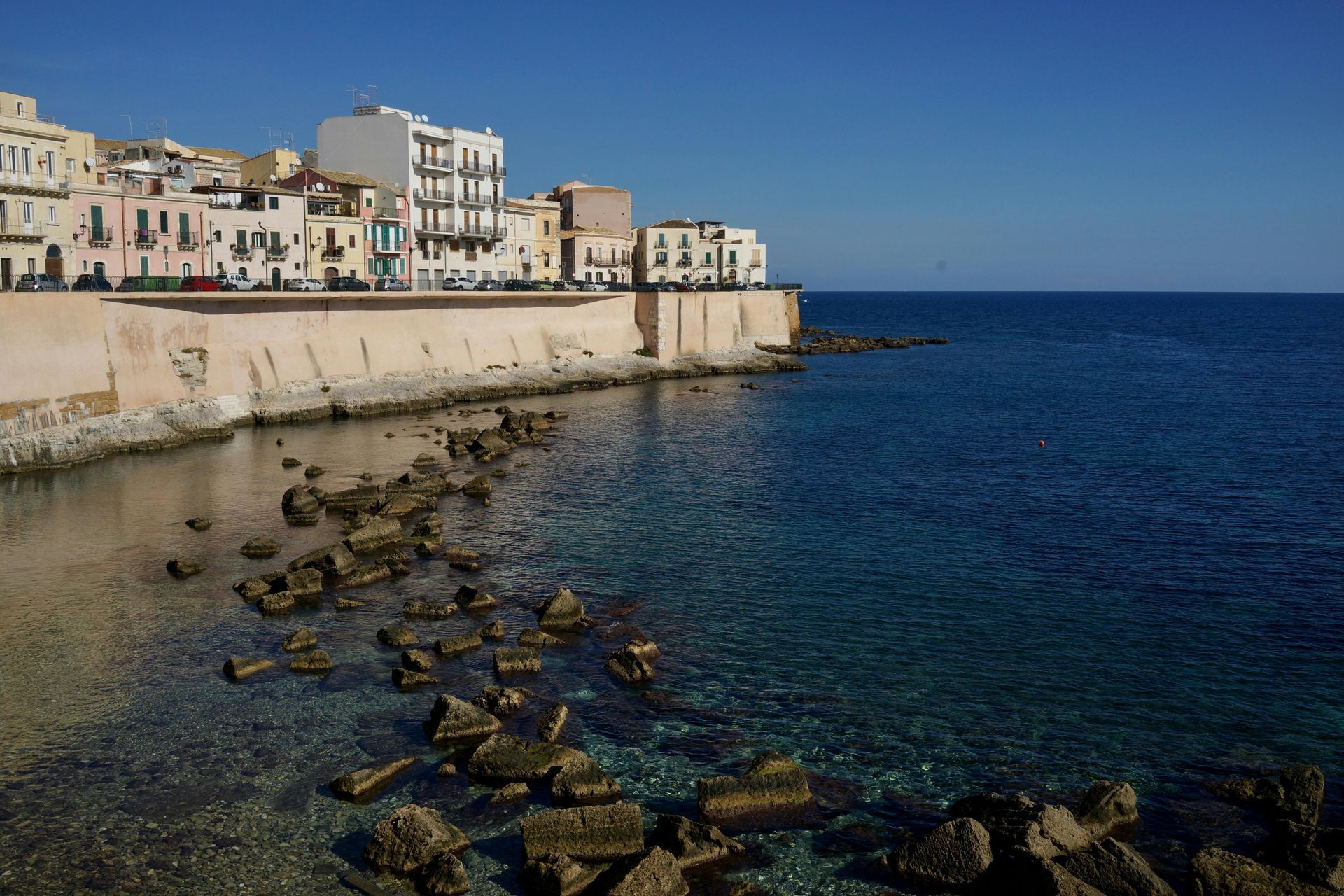
Days 13 - 14: TAORMINA & MOUNT ETNA
What is special about Taormina?
Overlooked by the eastern flank of the volcano is the ancient, elevated city of Taormina, perched part way up a sea cliff from which there are amazing views of Etna and out over the Ionian Sea and Naxos Bay and beach below. The city is protected by the restored remains of its Roman walls punctuated by the arches of the Porta Messina and Porta Catania at each end of the main thoroughfare, Corso Umberto. Situated on a rock promontory on the eastern edge of the town is the superbly preserved Greco-Roman theatre, the Teatro Antico (which is still used for concerts on a regular basis) and below are the immaculately maintained Duke of Cesaro gardens cascading down towards the sea at Mazzaro.
Approximately halfway along Corso Umberto is the monochrome marble paved Piazza IX Aprile on which is situated the Sant’ Agostino church built in 1448 and the Torre dell’Orologio clock tower – which has been restored a number of times but originally dates from the 12th century.
A short walk from the Porta Messina, situated on Via Pirandello are the Byzantine tombs known as the Arabian Necropolis which originally date from the 12th & 13th centuries. Despite their archeological importance, the tombs can easily be mistaken for a vaulted wall running along the side of the road but which nevertheless represent an important indication of the Christian way of life in Taormina at the time.
Another example of the ancient history of the town is the San Dominico monastery which dates from 1374 but which has now become a renowned luxury hotel, which featured heavily in the 2nd series of ‘White Lotus’: See our Blog ‘Tour Sicily’s White Lotus Locations’ >
Other places of interest in the town include the cathedral and the fountain in the Piazza Duomo, Palazzo Corvaja the Badia Vecchia and the Antiquarium, as mall museum dedicated to the history of the town – and which includes a marble plaque proclaiming that a ‘Taoromenitano’ (a resident of Taormina) won a horse race at the Olympic games!
Car parking in the town is almost exclusively reserved for resident permit holders only and whilst access up to the town is quite steep and sinuous, there is a very regular and reliable bus service that stops at the main points in the town. In addition, there is a cable car that leads town to the Mazzarò bay from where the famous island of Isola Bella is just a short walk away.
Exploring Mount Etna from Taormina
Being the largest major town close to Mount Etna, Taormina is the base for many organized walks and excursions to the volcano. These are many and varied, from a gentile experience including lunch at one of the numerous vineyards on the mountain’s slopes and an air-conditioned drive up to one of the craters and even helicopter trips up to and around the main crater, to the much more energetic guided hikes up through the snow. The availability of such experiences depends very much upon the prevailing weather conditions – and whether the volcano is in one of its frequent eruption phases.
Taormina Hotel Recommendation: UNAHOTELS Capotaormina>
Just Sicily can arrange
accommodation to coincide with the above itinerary depending on your criteria and budget. Our partner,
181Travel can also help in arranging and of the experiences activities mentioned in this blog. For personal recommendations and guidance
Call our resident
Sicily experts, Aurora or Roberto on
Remember “We don’t just know there – we live there!”
Author: Rob Ashton-Kane - Director
In 2005, I moved to Corsica after having first visited the island in 1998 on holiday with my, then, fiancée. After having spent all my previous professional life in the property industry, I made a total career change and took a job as a representative of a UK tour operator, progressing through the following years to become that company’s island manager in 2010. In 2013 I met Huw and Alison and was offered an opportunity to help them create and develop the Just Corsica brand and, subsequently, the Just Sicily brand
Just Sicily News and Blog
